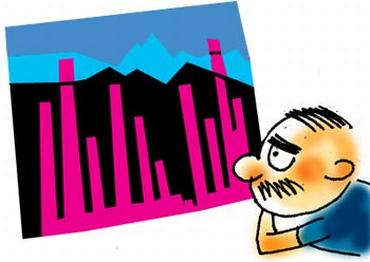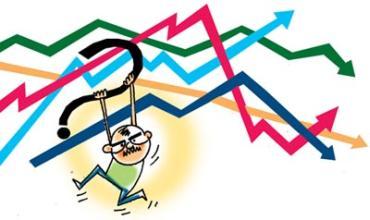
They say nobody can time the markets. But this time around the stock market regulator SEBI (Securities and Exchange Board of India), and the mutual fund industry body AMFI (Association of Mutual Funds of India), seem to have got their timing bang on!
SEBI, through NISM (National Institute of Securities Markets) and AMFI through various mutual funds, have embarked on the biggest investor education campaigns our country has ever seen, at a time when FIIs are selling each day, Nifty is once again close to 4600 and investors are again beginning to get jittery!
Should Indian investors also panic and sell or should we stop our SIPs (systematic investment planning), like we did in 2008 when Sensex was at 8000 odd levels, or should we lap up this opportunity with both hands?
.
The author is a professional financial trainer and is faculty at Nagpur based Money Bee Institute Private Limited. This article is for information purposes only. Please do not make investment decisions based upon this article.

A common question these days is why are our markets falling if there is a problem in Greece? In 2008 we were asking -- why are our markets falling if there is a problem in US housing market? The simplicity of these questions highlights the complexity of the problem -- that of market movements and the abysmally low levels of financial education.
Some statistics for starters:
In a country of 100 crore plus people, there are only approximately 4 crore demat accounts. The amount of money managed by the entire mutual fund industry stands at approximately Rs 8 lakh crore against Rs 40 lakh crore in safe fixed income return generating investments. These fixed income investments yield on an average 8 per cent pre tax returns.
Nifty is the only liquid asset class (Nifty here represents equities) which has given returns at a rate of 12 per cent CAGR over the last 14 years. Nifty was at 1000 in Nov 2005 and is at approximately 5000 today. This translates into a CAGR of roughly 12 per cent over the 14.5-year time horizon.
Long-term inflation in India (from 1971-72 till 2008-09) as per RBI is in the range of 8 per cent.
Now if we juxtapose the above three points, what we get is that majority of Indians choose to remain poor/ middle class by investing in assets where money grows at a rate lesser than inflation on a post tax basis.
Secondly, equities have handsomely beaten inflation but returns in equities being volatile act as a deterrent for the lay investor and hence very few of our countrymen have benefited from this wonderful asset class.
Thirdly, quite a few of the FIIs are investing money of foreign pension funds. That means foreigners are confident on India and its stock markets and are even ready to bet a small portion of their pension money on our markets, whereas our pension fund managers have till date not invested even a single penny in our stock markets, although regulations allow them to do so.
So look at it any which ways, we are destined to remain in the middle class category. Or should I say, we choose to remain middle class. We think not taking risk is safe whereas the fact is not taking risk is the biggest risk.

If outsiders can make money here, if the government can make money here by selling its ownership in PSUs, if big players like banks and insurance companies can make money here, surely there must be a way where even we, the small investor, can make money here. Hence it is absolutely necessary that we understand this monster known as the stock market and start taking its advantage.
Now there have been hundreds and thousands of articles on SIP. Every now and then you will find experts on TV talking about it. The only problem is that most of these people talk about long term in the category of 3 to 5 years. For some strange reason nobody talks of 10 years or 20 years of investing in mutual funds.
It is with this objective that both NISM and AMFI have taken this Himalayan task upon themselves to educate one and all. There has to be an increase in the number of Indians coming to the capital markets -- directly or indirectly.
Now increase there was. AMFI data suggests that maximum money entered the markets when the Sensex moved from 17K to 21K and subsequently maximum number of people exited when the Sensex was lingering at 8K. How can we ever become rich by this behaviour by this herd mentality?
So, coming to the latest fall season. When an FII comes to India and the exchange rate is say 1$ = Rs 45, he gives 1$ and purchases Rs 45, which he invests in the stock markets and generates say Rs 5 as profit.
At the same time around, Greece gets into trouble and globally investors are panicking. Everybody wants to exit the Euro currency hence they dump all assets related to the Euro, be it stocks, bonds or the currency itself.
Where will all this money go? The obvious choice is gold and US dollar. In spite of all the problems in US economy, still it is considered as a safe haven asset in times of crises. So money rushes to US dollar which in turn appreciates as its demand increases.

So now the same 1$ becomes worth Rs 50. What will happen to the FII? He invested Rs 45 and increased it to Rs 50 and now when he wants to convert it into dollars, he gets again the same 1$! That means as the US dollar appreciates, FIIs who are in India would like to repatriate their profits in US dollar terms just to protect value; that is, to protect their profits. If the fail to do so, they may even get less than what they brought to India. So although they made money in the Indian stock market, they run the risk of eroding their profits and even capital in the forex market. They are not at all having a problem with India and Indian stock markets, it is the rising dollar which is creating problems for them.
Now that puts them to a serious disadvantage, and conversely us to a huge advantage! Come what may, it is here only that wealth can be made over the next say two decades. So all those who are exiting today for whatever reason will have to come back and soon and in huge numbers.
Let's not wait for the Sensex to be back above 18K or worse still 21K and then think of entering the market. The time to begin is NOW. Do SIPs with a 15-year horizon, buy blue-chips directly for the next 20 years, go long in the F&O space (if you understand the risks & returns associated with it), open new demat accounts, exit the worthless penny stocks bought on tips, buy good solid companies which will create India in the coming two decades and fall in love with your money!
Where is the doubt, friends? Hardly 3 per cent of our household savings is coming into equities directly or indirectly. HDFC Bank and Infosys are Indian companies today only due to their place of origin, if we look at the shareholding pattern, we will realise that a huge chunk of these stalwarts is owned by foreigners whereas Indians are as good as not being there! If not direct equities, let's start 20 year SIPs. We can start with a minimum of Rs 50 per month by way of SIP what more can we ask for?

Let's do it... let's begin... let's have faith in our economy, our banking regulator RBI, SEBI, our politicians (yes we have to!), our future and handhold each other as we slowly but surely walk towards a more prosperous tomorrow.
No outsider will be coming to teach us how to make money... we have to learn ourselves. We have to be ready to fall and fail, yet move forward and finally to rise and shine. And history of free India tells us we can.
In 1965 William and Paul Paddock, two brothers, in their book Famine 1975 predicted that by 1975 Indians will die by the millions due to hunger and famine. Humiliation was being heaped upon India and Indians from all quarters.
However it was the likes of M S Swaminathan, G S Athwal, S P Kohli, V S Mathur, Lal Bahadur Shastri (former PM of India), C Subramaniam (former Agriculture minister) and Nobel laureate Norman Borlaug who heralded the Green Revolution into our country. Schools in Punjab had to be closed as classrooms were being used to store wheat. Foreigners were coming to India to study the miracle. All this in a period of 10 years from 1965 to 1975! The same years when the Paddocks had prophesied that 10 million Indians will die of hunger!
If we could do it then, surely we can do it now. Just a little bit of understanding and a sufficiently long-term approach and we would be on our way to prosperity. The next two decades are surely going to be India's. The questions is whether Indians will benefit from them?